Transient Characteristic Analysis of Variable Frequency Speed Regulation of Axial Flow Pump
Abstract
:1. Introduction
2. Numerical Simulation and Experimental Verification
2.1. Simulation Model
2.2. Meshing and Validation of Mesh Independence
2.3. Boundary Conditions
2.4. Experimental Investigation
2.4.1. Experimental Apparatus
2.4.2. Steady-State Pump Performance Test
3. Analysis of Numerical Simulation Results
3.1. Transient Numerical Simulation of Variable Frequency Speed Regulation
3.1.1. Pressure Distribution
3.1.2. Transient Pump Performance under Variable Frequency Speed Regulation
3.2. PIV Experiment
4. Conclusions
- (1)
- The variable speed form of the axial flow pump can choose scheme 1 (uniform acceleration and deceleration) or scheme 3 (acceleration and deceleration with decreasing acceleration), wherein scheme 1 can maintain the stable change of head and shaft power and better energy saving effect; the biggest advantage of scheme 3 is that it can reach the predetermined head in advance and can transition to a stable operation state when the speed change is completed. When it is necessary to speed up to a higher speed, scheme 3 is the best choice.
- (2)
- Different frequency conversion speed regulation methods will affect the local distribution of pressure in the pump. The acceleration scheme with continuously decreasing acceleration has the most stable pressure change and the best acceleration performance. The deceleration scheme with continuously decreasing acceleration has the smallest pressure, small fluctuation, and good stability.
- (3)
- The change of velocity and acceleration will not cause great disturbance to the main flow field. In the acceleration process, the influence of acceleration change on the stability of the local flow field can be ignored, and the frequency conversion scheme with higher efficiency can be selected. In the process of deceleration, the streamline of the impeller area will gradually become flat with the decrease in the speed, and the stability of the uniform deceleration scheme will be better than that of the variable acceleration.
Author Contributions
Funding
Institutional Review Board Statement
Informed Consent Statement
Data Availability Statement
Conflicts of Interest
References
- Yang, F.; Chang, P.; Yuan, Y.; Li, N.; Xie, R.; Zhang, X.; Lin, Z. Analysis of Timing Effect on Flow Field and Pulsation in Vertical Axial Flow-Pump. Mar. Sci. Eng. 2021, 9, 1429. [Google Scholar] [CrossRef]
- Ji, D.; Lu, W.; Lu, L.; Xu, L.; Liu, J.; Shi, W. Characteristics and application of saddle-shaped zone in performance curve of axial-flow pump system. J. Drain. Irrig. Mach. Eng. 2021, 39, 1081–1086. [Google Scholar]
- Jing, R.; He, X.J. Axial flow pump and its application overview. Gen. Mach. 2014, 86–89. Available online: https://kns.cnki.net/kcms/detail/detail.aspx?dbcode=CJFD&dbname=CJFD2014&filename=TYJS201409032&uniplatform=NZKPT&v=7ijw0QsCwZVSz_fA2uP6WXOHVZrqma1nQr40CDqooPbxlle1I1FZfc9DfFlpD9h3 (accessed on 8 August 2022).
- Wu, Y.W.; Liang, X.; Liu, Z.Y.; Liu, H.Q. Analysis of pump stoppage characteristics of the axial-flow pump under off-hump conditions. China’s Rural Water Hydropower 2019, 12, 173–175+180. [Google Scholar]
- Zhang, A.X. Characteristics and application of axial flow pump. Undergr. Water 2014, 199–200. [Google Scholar] [CrossRef]
- Zhang, D.H.; Ming, L.D.; Sun, E.J. Analysis of frequency conversion and speed regulation operation technology and energy saving of large pumping station. Energy Res. Util. 2001, 33–34. Available online: https://kns.cnki.net/kcms/detail/detail.aspx?dbcode=CJFD&dbname=CJFD2001&filename=NYYJ200106015&uniplatform=NZKPT&v=vcH73EGx2Nq2aROZh7Gcb1Ig14qY5wyijlR9UhclLAdMlkLBo24Qebm-TJGrqde_ (accessed on 8 August 2022).
- Zhang, R.; Zhu, F.; Liu, X.; Liang, Y. Performances and control mode for bulb tubular pumps with VFDs. J. Drain. Irrig. Mach. Eng. 2022, 40, 136–143. [Google Scholar]
- Yang, Z.B.; Jin, D.S.; Gui, S.B. Study on frequency Conversion speed regulation operation of a water pump unit in Jinhuangxia Pump Station. Water Resour. Plan. Des. 2019, 121–124. [Google Scholar] [CrossRef]
- Hui, D.X.; Pin, T.F.; Jian, S.L.; Liu, X.C.; Peng, Z.W.; Ye, X. Study on a nonlinear regression model of speed regulation performance of axial-flow pump. Trans. Chin. Soc. Agric. Mach. 2017, 48, 147–154. [Google Scholar]
- Tan, J.B.; He, Z.L.; Wang, L.Q. Analysis of energy saving benefit of flow regulation and frequency conversion speed regulation of irrigation pump station. J. Water Resour. Water Eng. 2018, 29, 172–176. [Google Scholar]
- Ma, Z.Y. Discussion on operation efficiency of the water supply system of variable frequency pump. J. Water Resour. Water Eng. 2006, 54, 79–84. [Google Scholar]
- Nowak, D.; Krieg, H.; Bortz, M.; Geil, C.; Knapp, A.; Roclawski, H.; Böhle, M. Decision Support for the Design and Operation of Variable Speed Pumps in Water Supply Systems. Open Mech. Eng. J. 2018, 10, 734. [Google Scholar] [CrossRef]
- Li, N.; Zhou, L.C.; Hou, G.X. Analysis of energy saving in the operation of variable frequency and Variable Angle double Axial flow pump. China Rural Water Hydropower 2016, 185–188. Available online: https://kns.cnki.net/kcms/detail/detail.aspx?dbcode=CJFD&dbname=CJFDLAST2016&filename=ZNSD201611043&uniplatform=NZKPT&v=UyktyjQwuk9U4zg0lWUrzwiI_gBI132a_yeOehIAmGQgSnNjqdA4uGzKdcWmL79J (accessed on 8 August 2022).
- Jing, H.; Niu, Y.; Cheng, Y.X.; Liu, C.H. MATLAB modeling and simulation of variable speed energy saving regulation of water supply pump station. Yellow River 2014, 36, 89–91. [Google Scholar] [CrossRef]
- Sha, Y.; Song, D.; Duan, F.; Yu, C.; Cao, M. Variable speed performance test and internal flow field numerical calculation of axial flow pump. J. Mech. Eng. 2012, 48, 187–192. [Google Scholar] [CrossRef]
- Feng, Z.M.; Guo, C.; Zhang, D.; Cui, W.; Tan, C.; Xu, X.; Zhang, Y. Variable speed drive optimization model and analysis of the comprehensive performance of beam pumping unit. J. Pet. Sci. Eng. 2020, 191, 107–155. [Google Scholar] [CrossRef]
- Cimorelli, L.; Covelli, C.; Molino, B.; Pianese, D. Optimal Regulation of Pumping Station in Water Distribution Networks Using Constant and Variable Speed Pumps: A Technical and Economical Comparison. J. Fluids Eng. 2020, 13, 2530. [Google Scholar] [CrossRef]
- Sun, Y.H.; Zhen, L.L.; Zhang, X.W. Study on variable frequency speed regulation of pump unit of reservoir water intake pump station under large water level variation. J. Irrig. Drain. 2019, 38, 91–95. [Google Scholar]
- Li, X.H. Discussion on the application of frequency conversion technology in technical transformation of pumping station. Guangxi Water Resour. Hydropower 2020, 10, 80–82. [Google Scholar]
- Mao, Z.; Asai, Y.; Yamanoi, A.; Wiranata, A.; Minaminosono, A. Fluidic rolling robot using voltage-driven oscillating liquid. Smart Mater. Struct. 2022, 31, 105006. [Google Scholar] [CrossRef]
- Mao, Z.B.; Asai, Y.; Wiranata, A.; Kong, D.Q.; Man, J. Eccentric actuator driven by stacked electrohydrodynamic pumps. J. Zhejiang Univ. Sci. A Appl. Phys. Eng. 2022, 23, 6. [Google Scholar] [CrossRef]
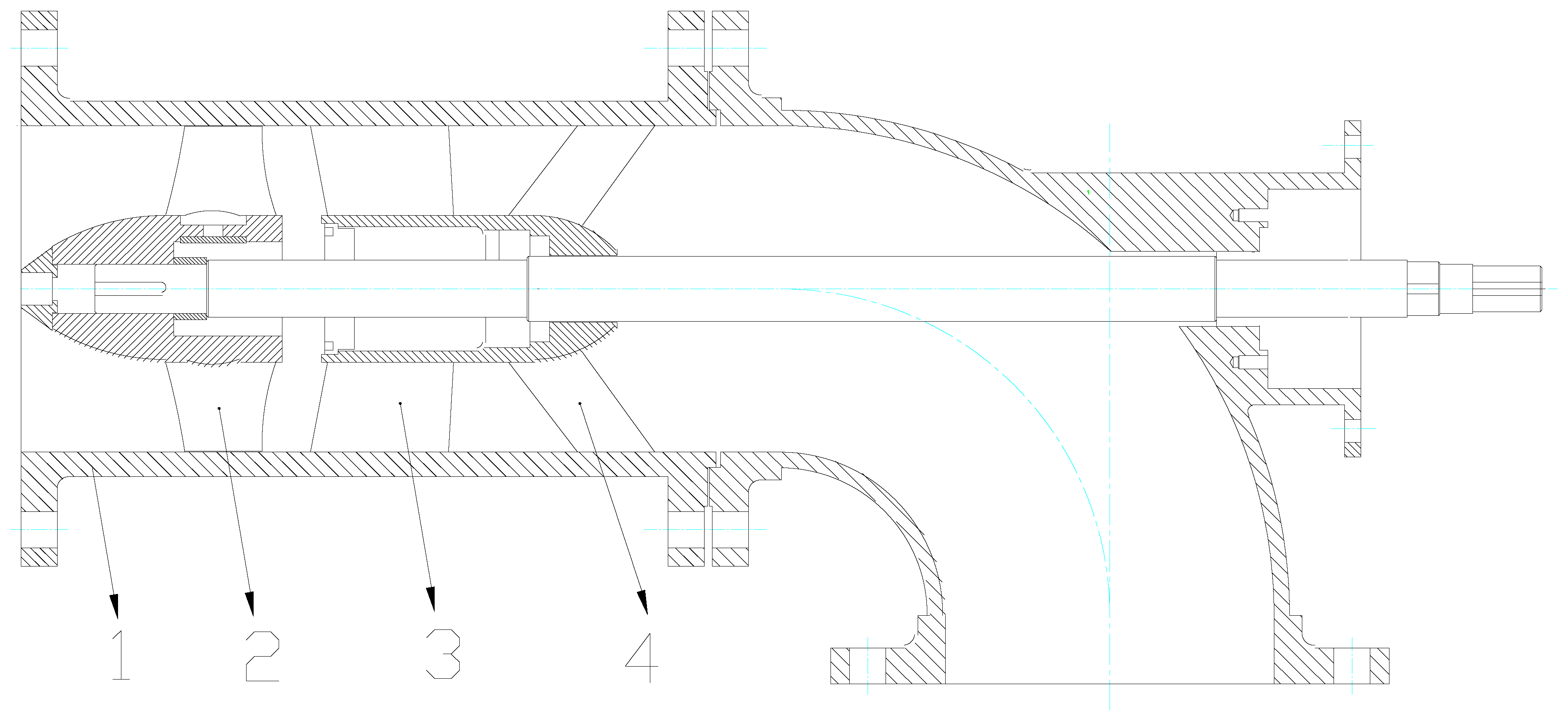

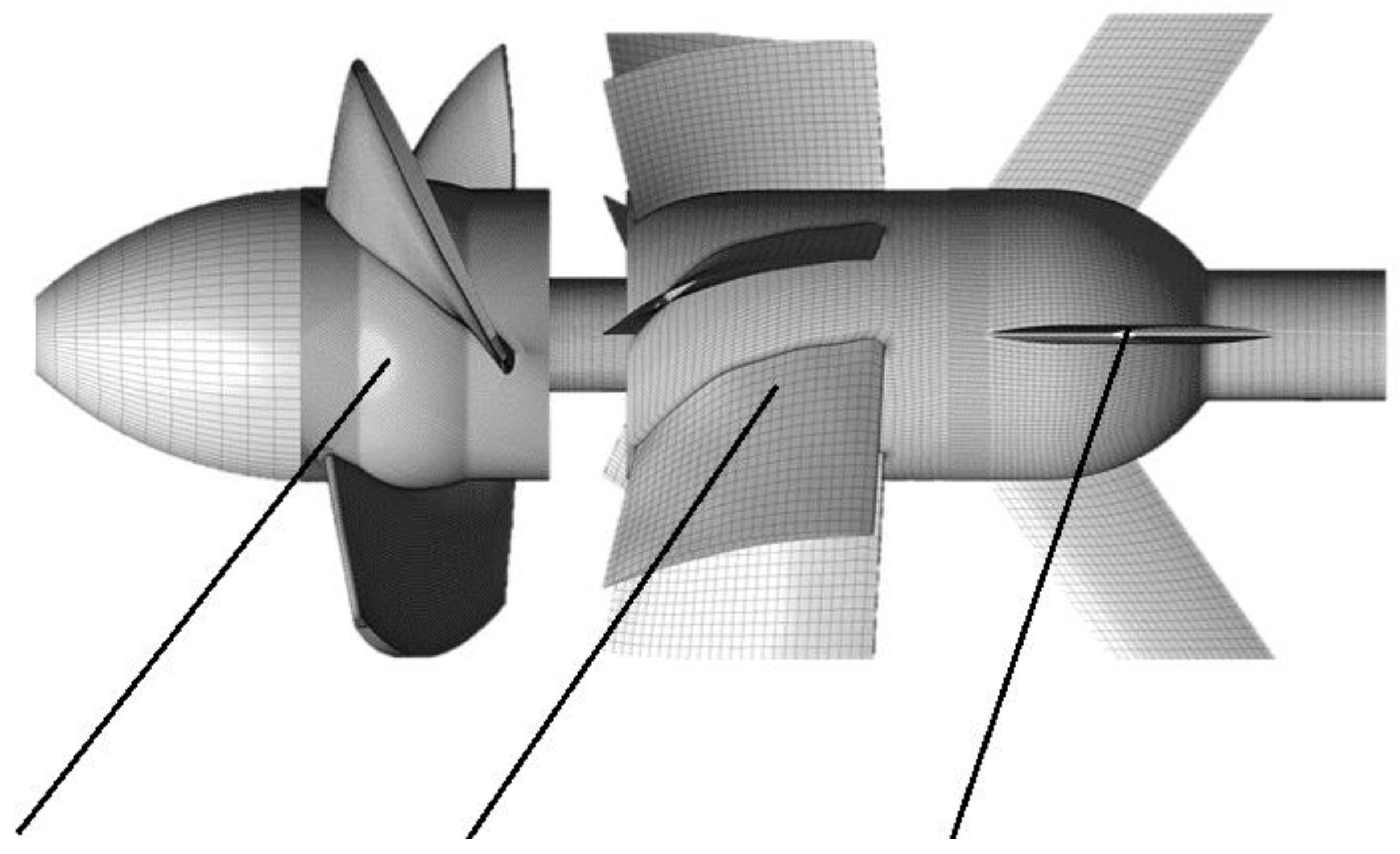

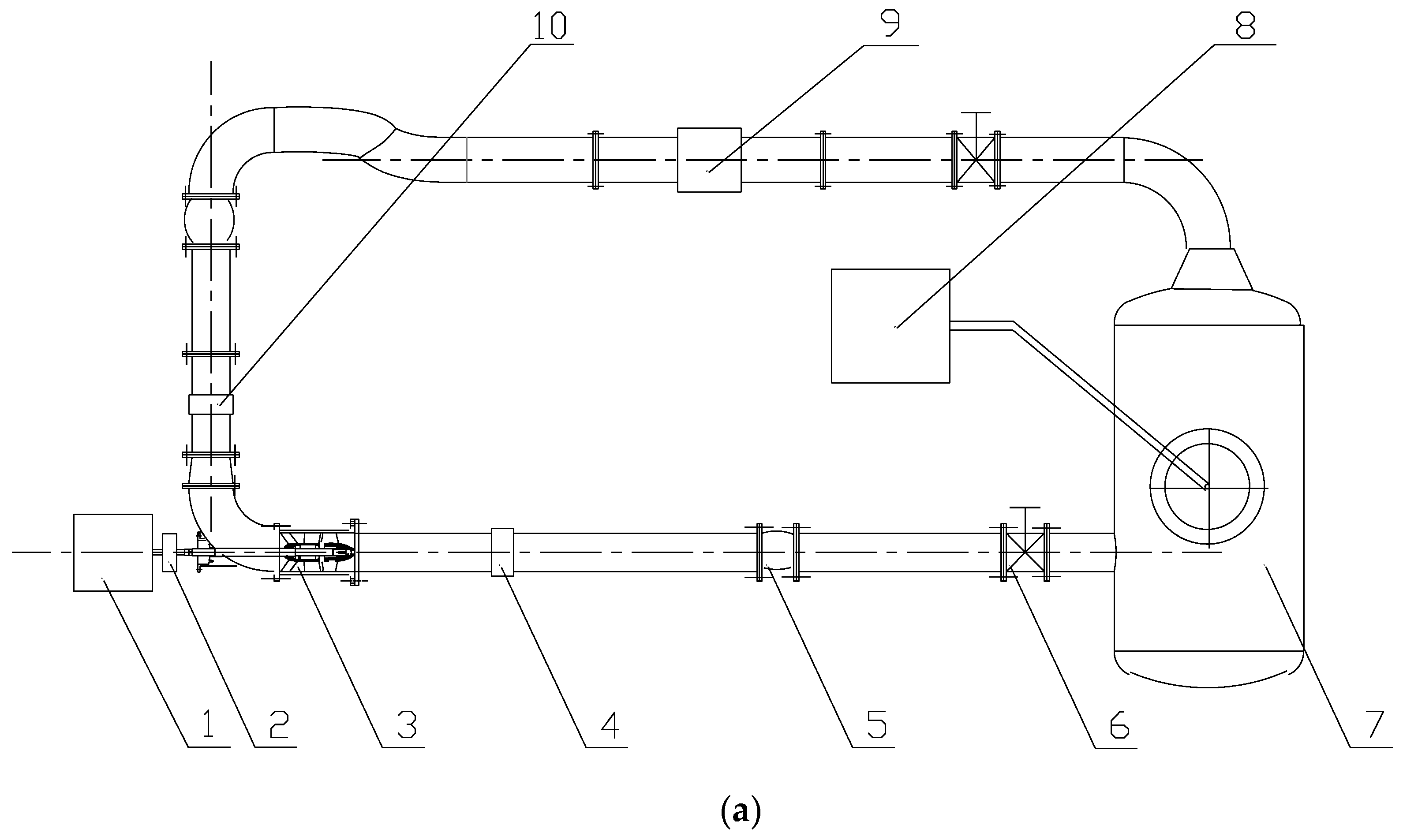
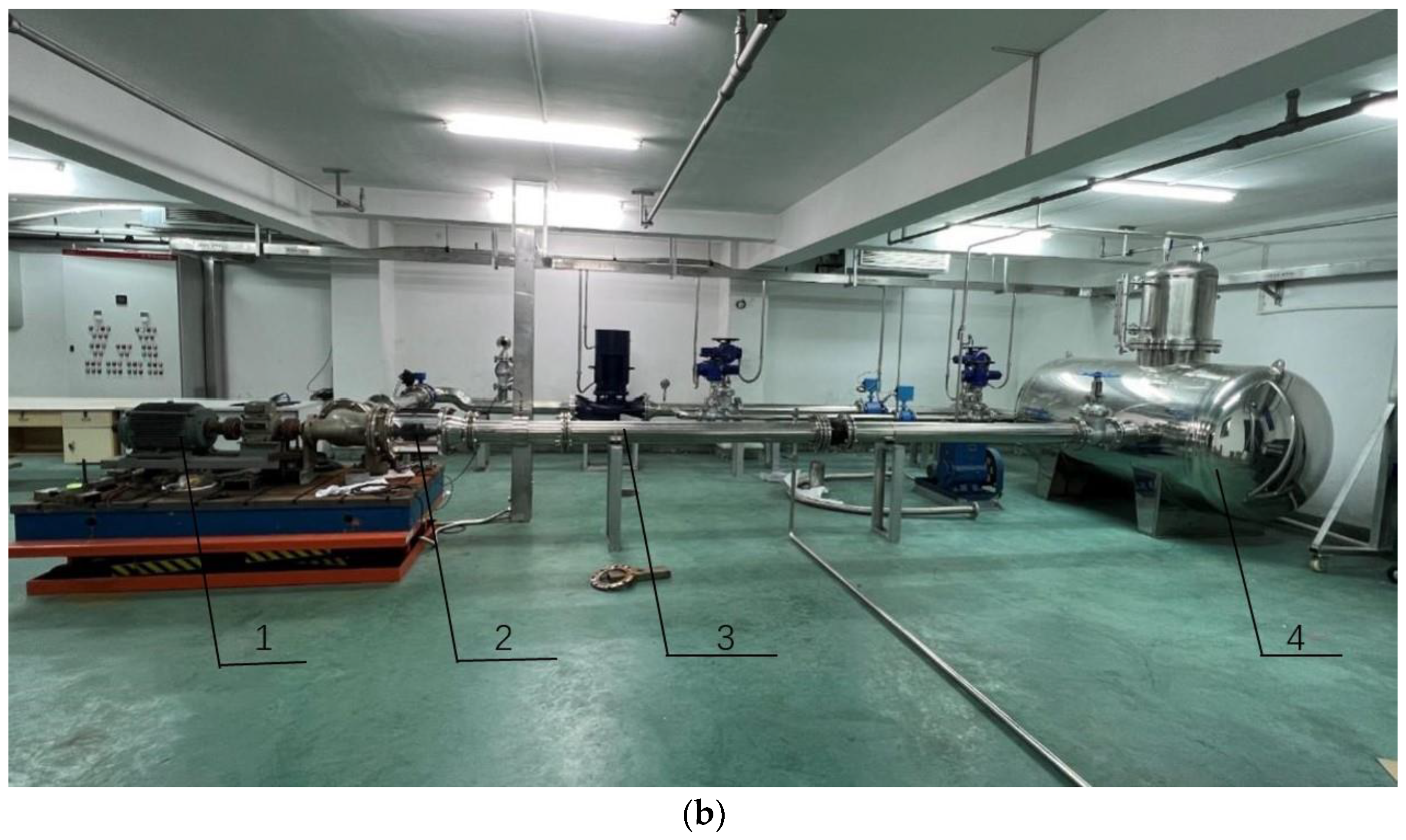
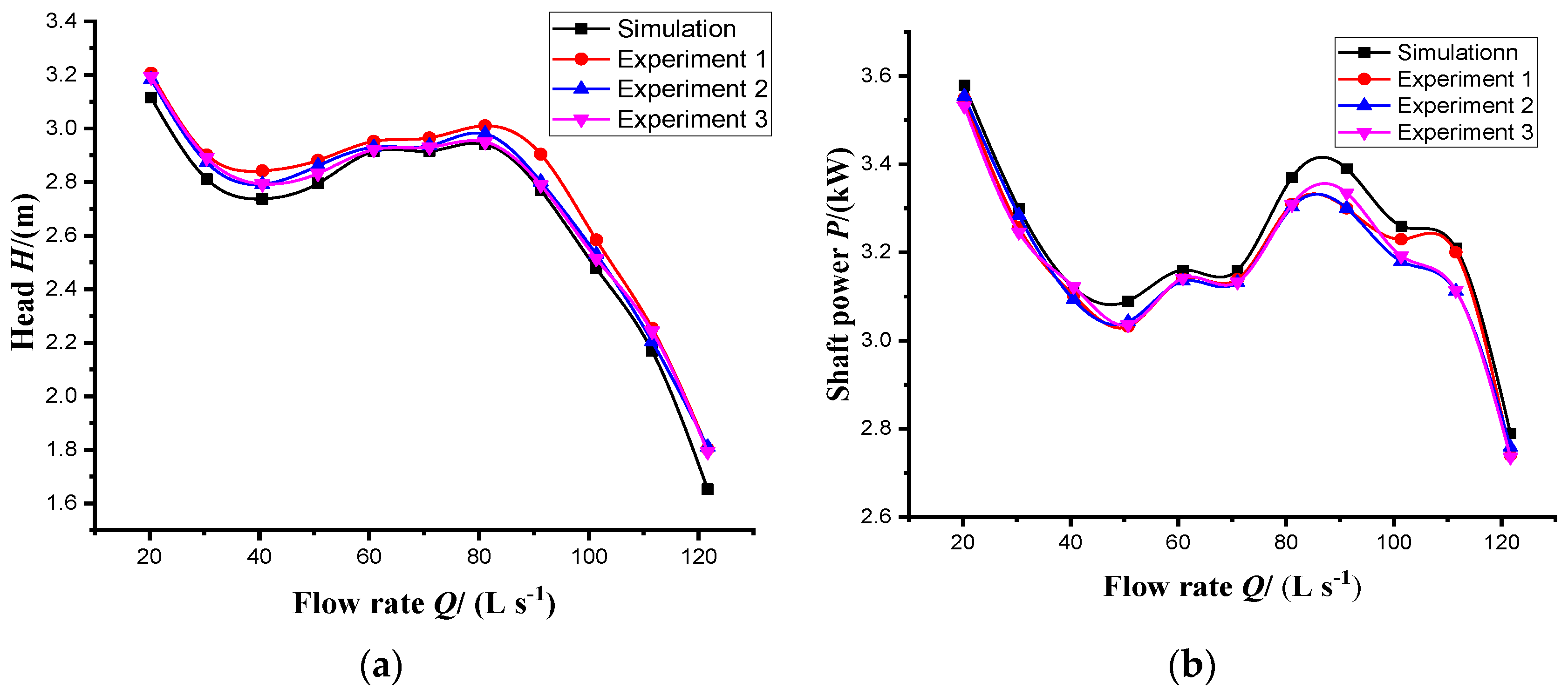

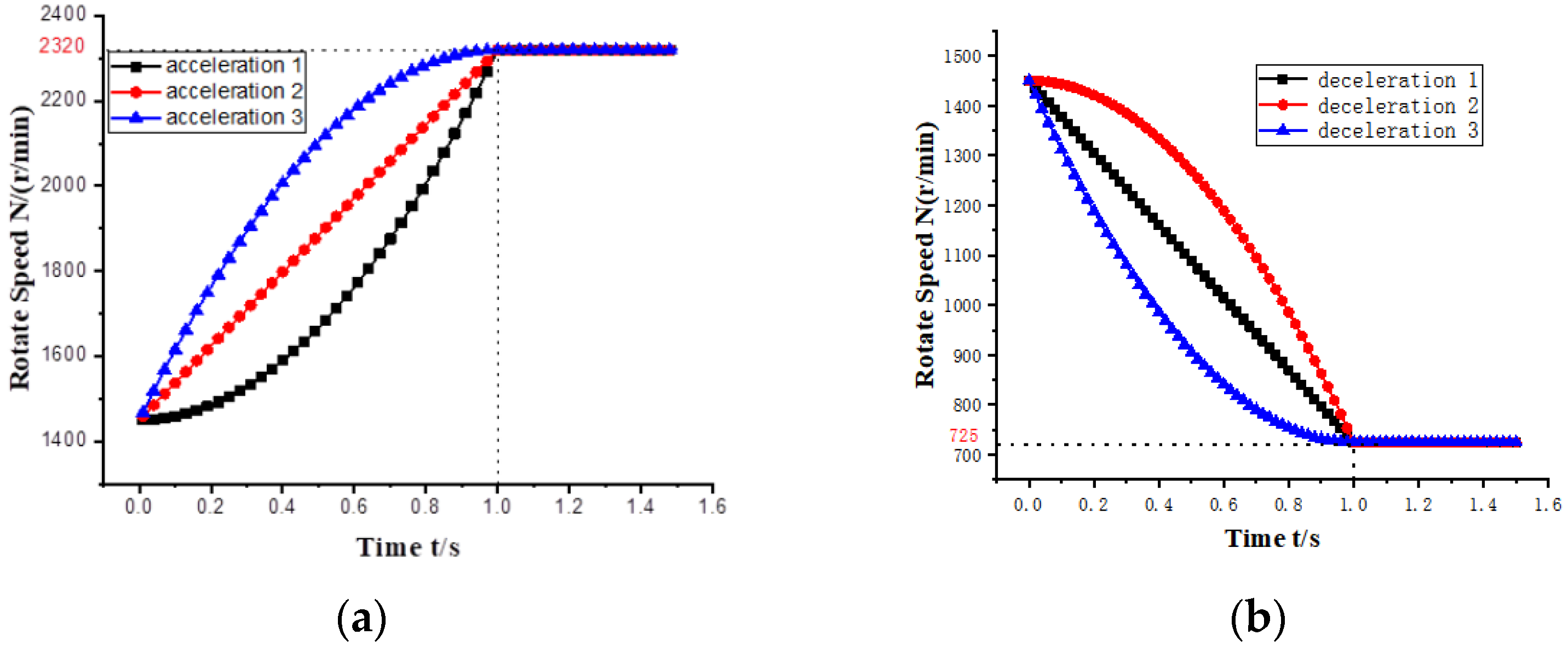
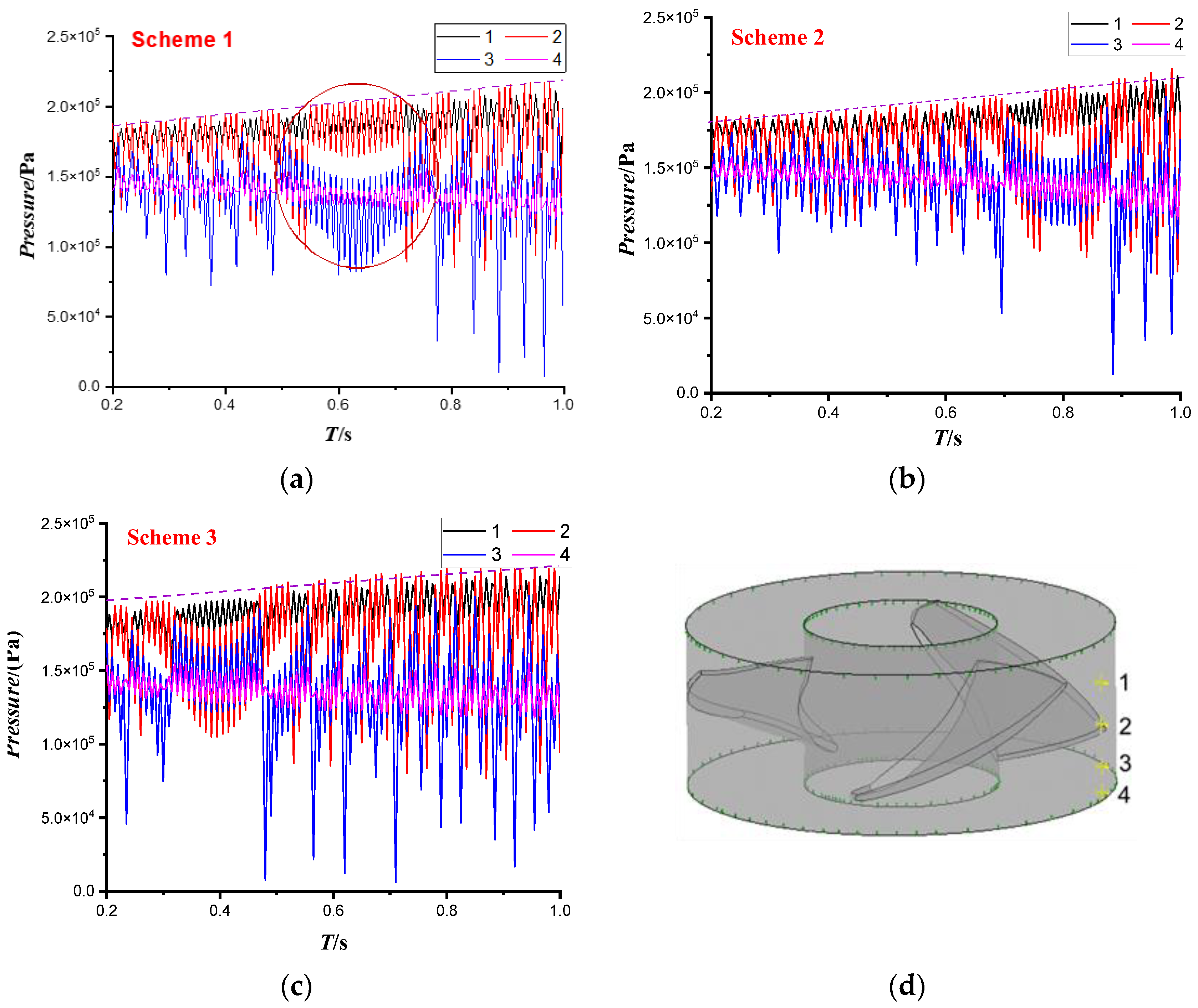

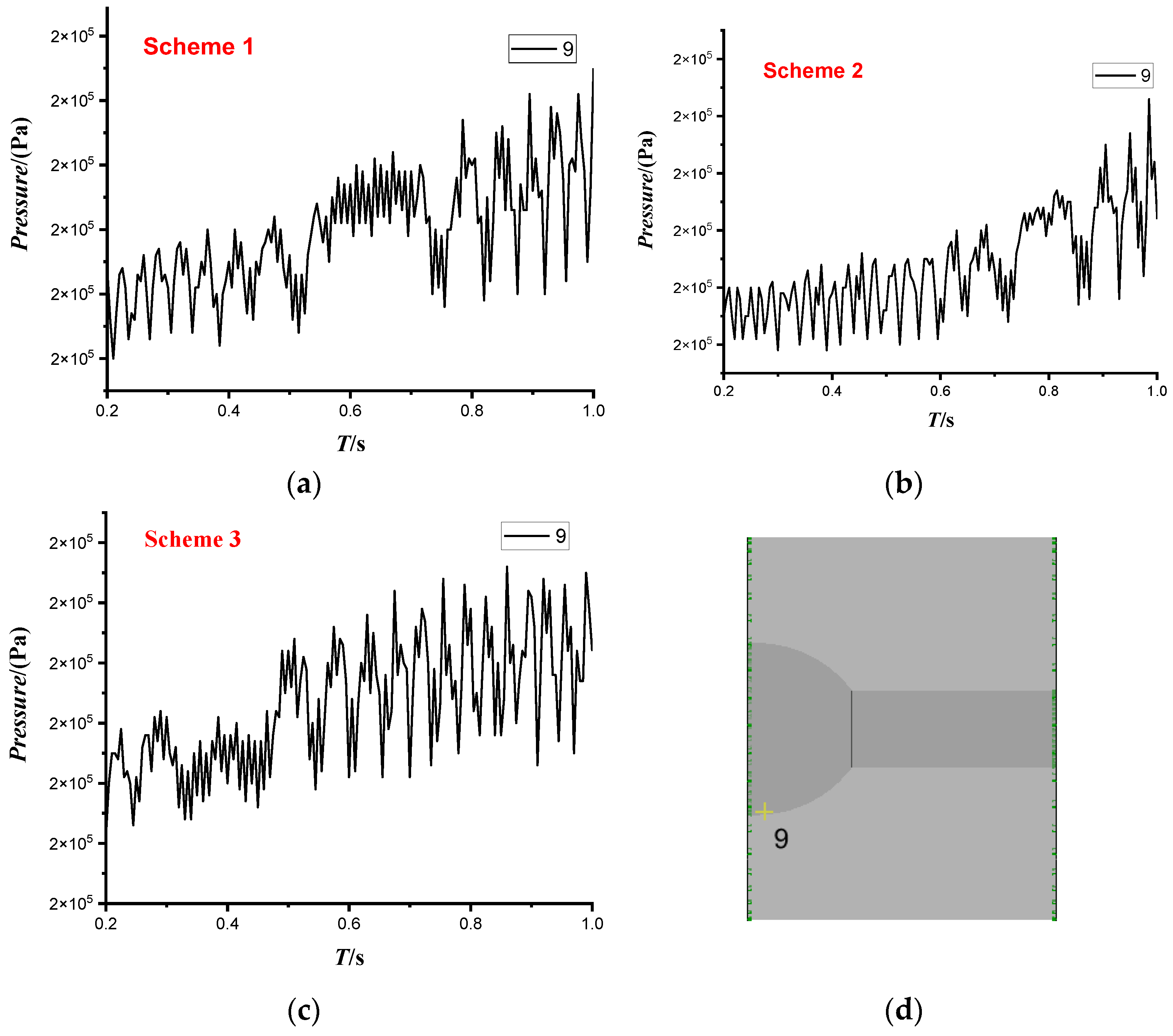
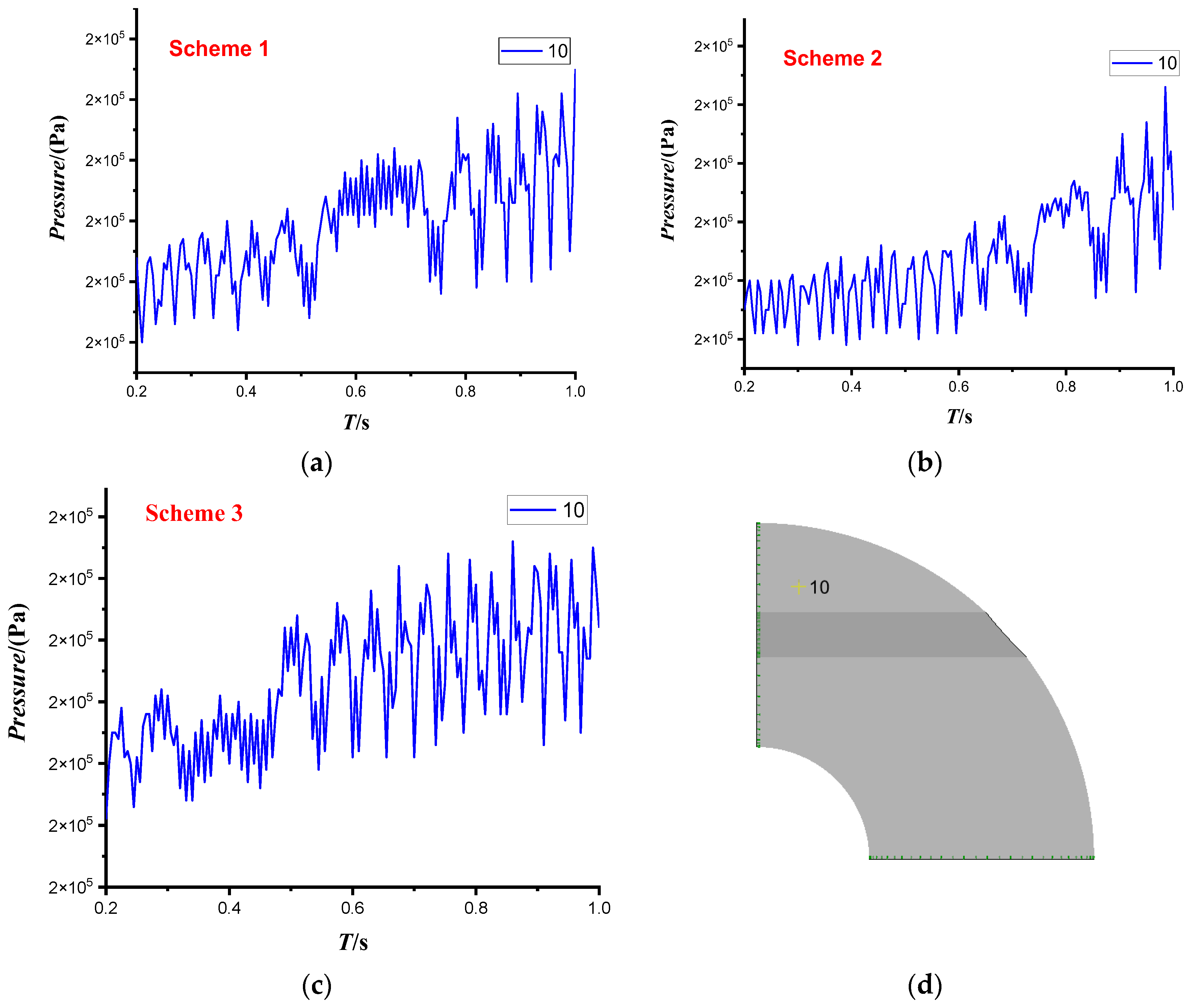
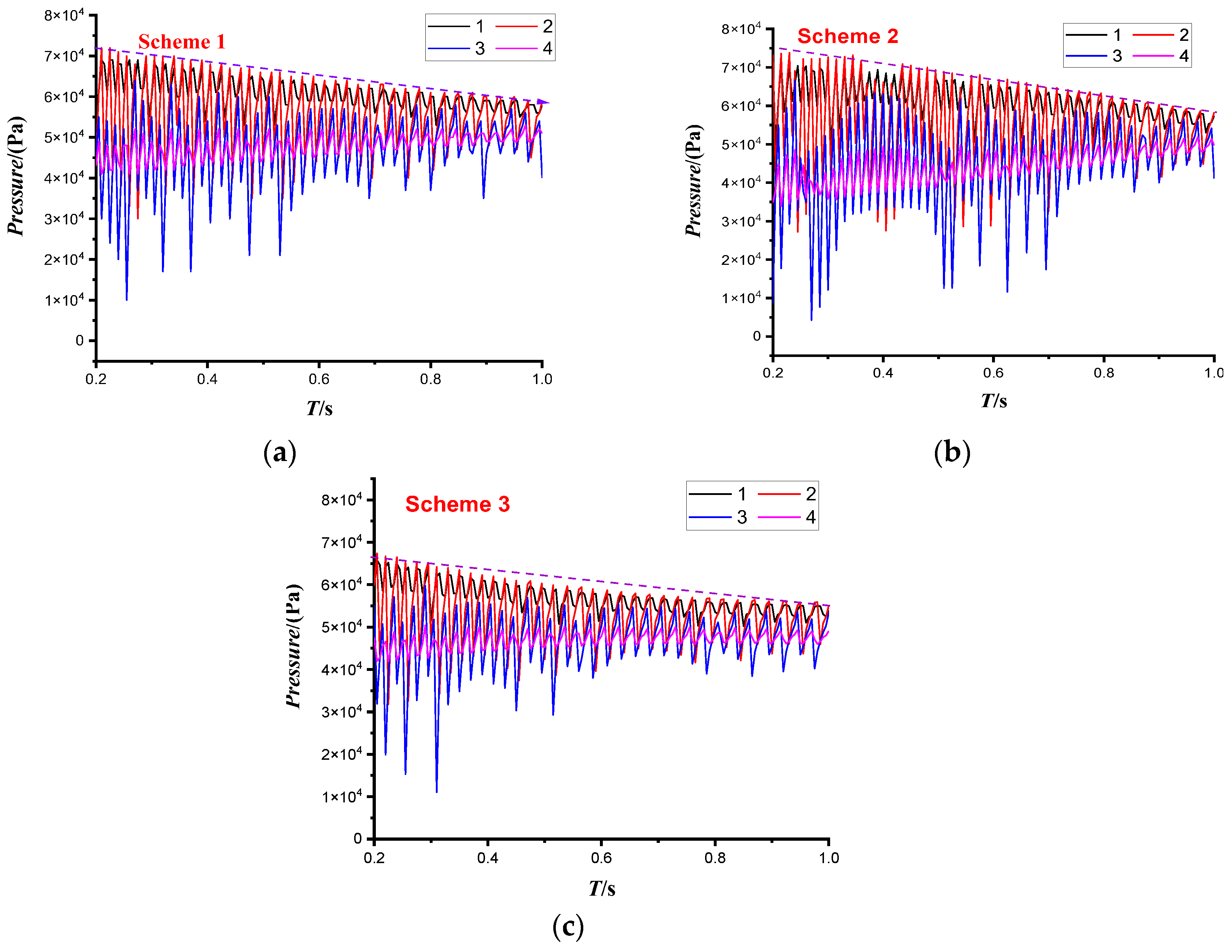
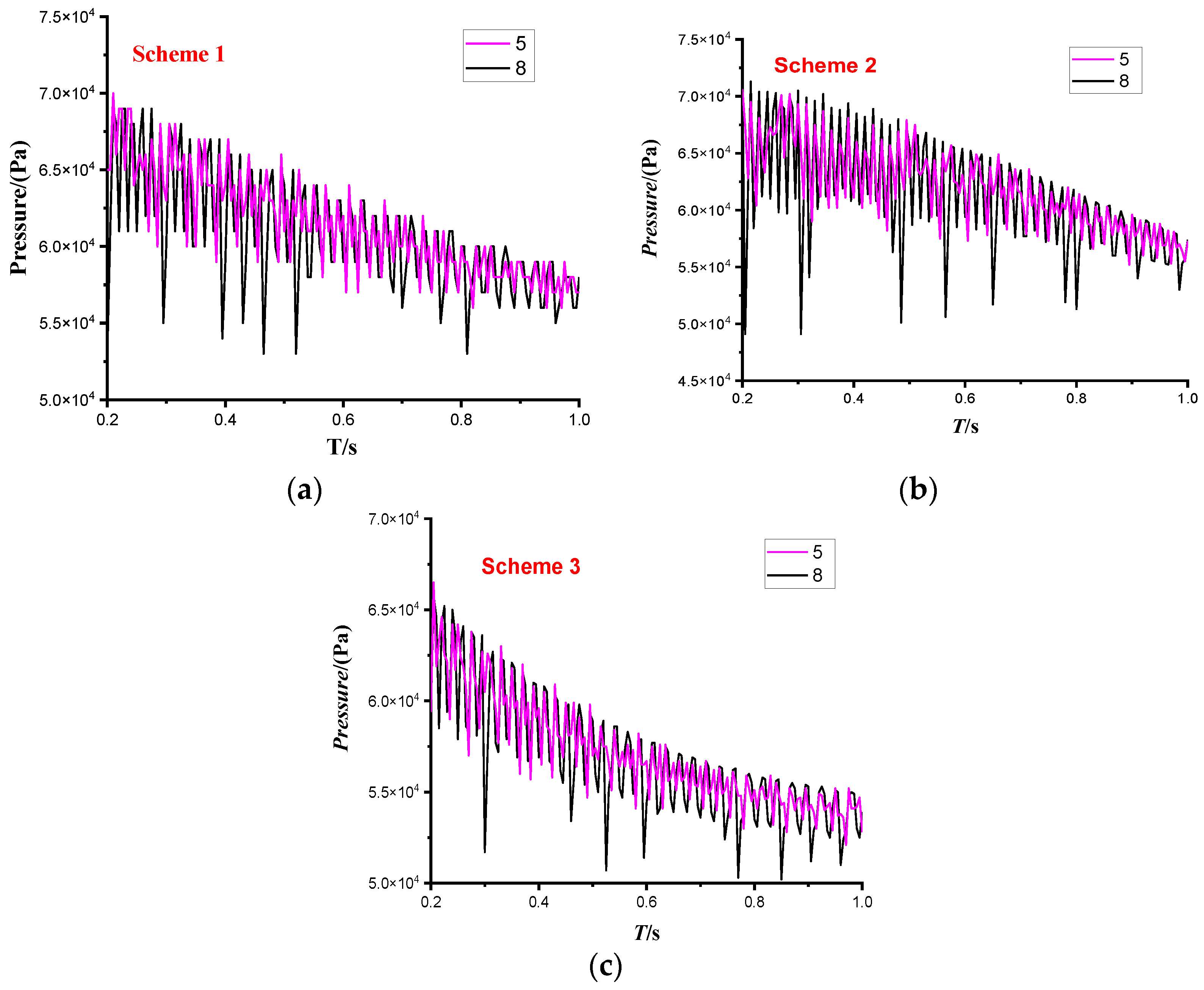
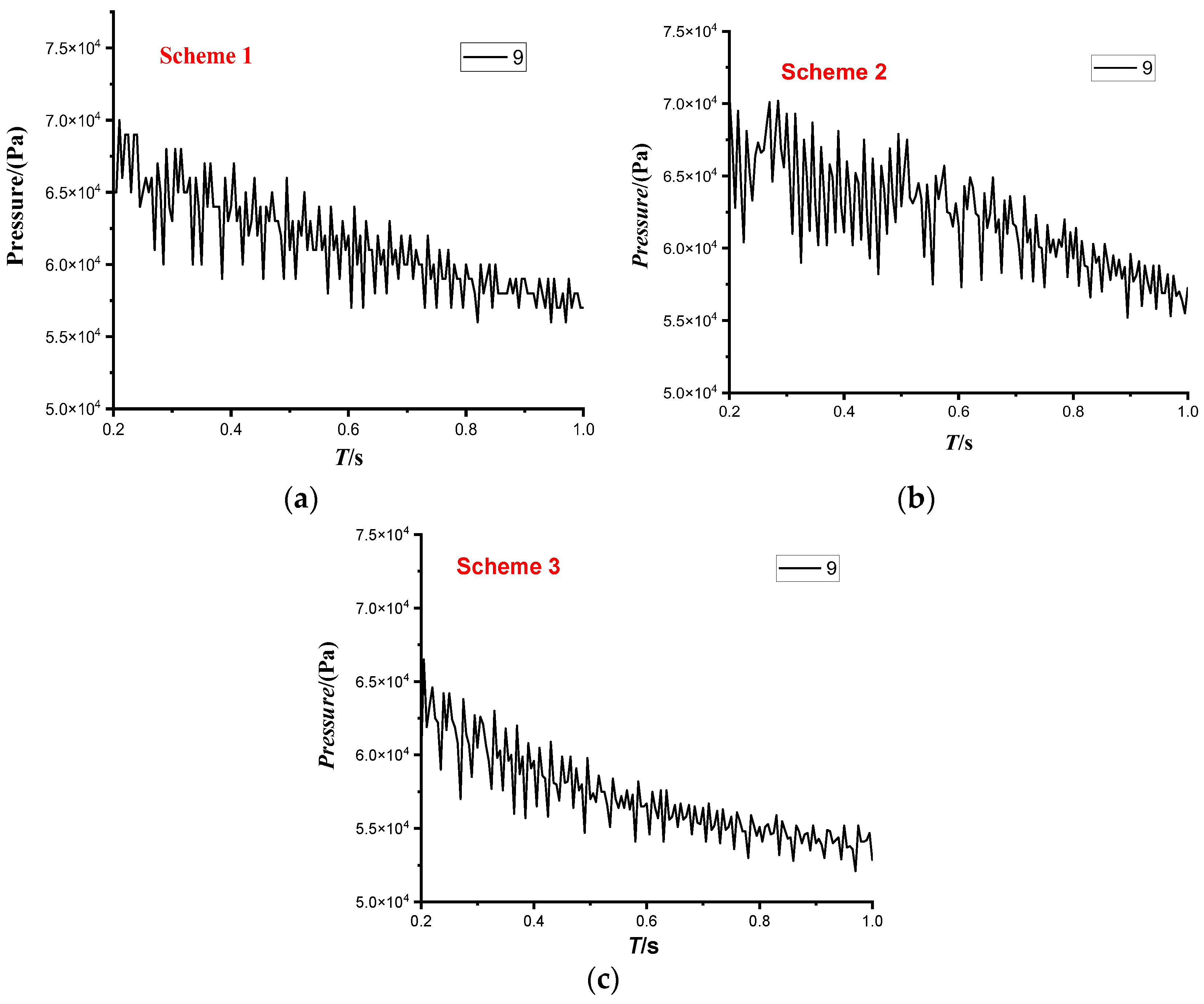
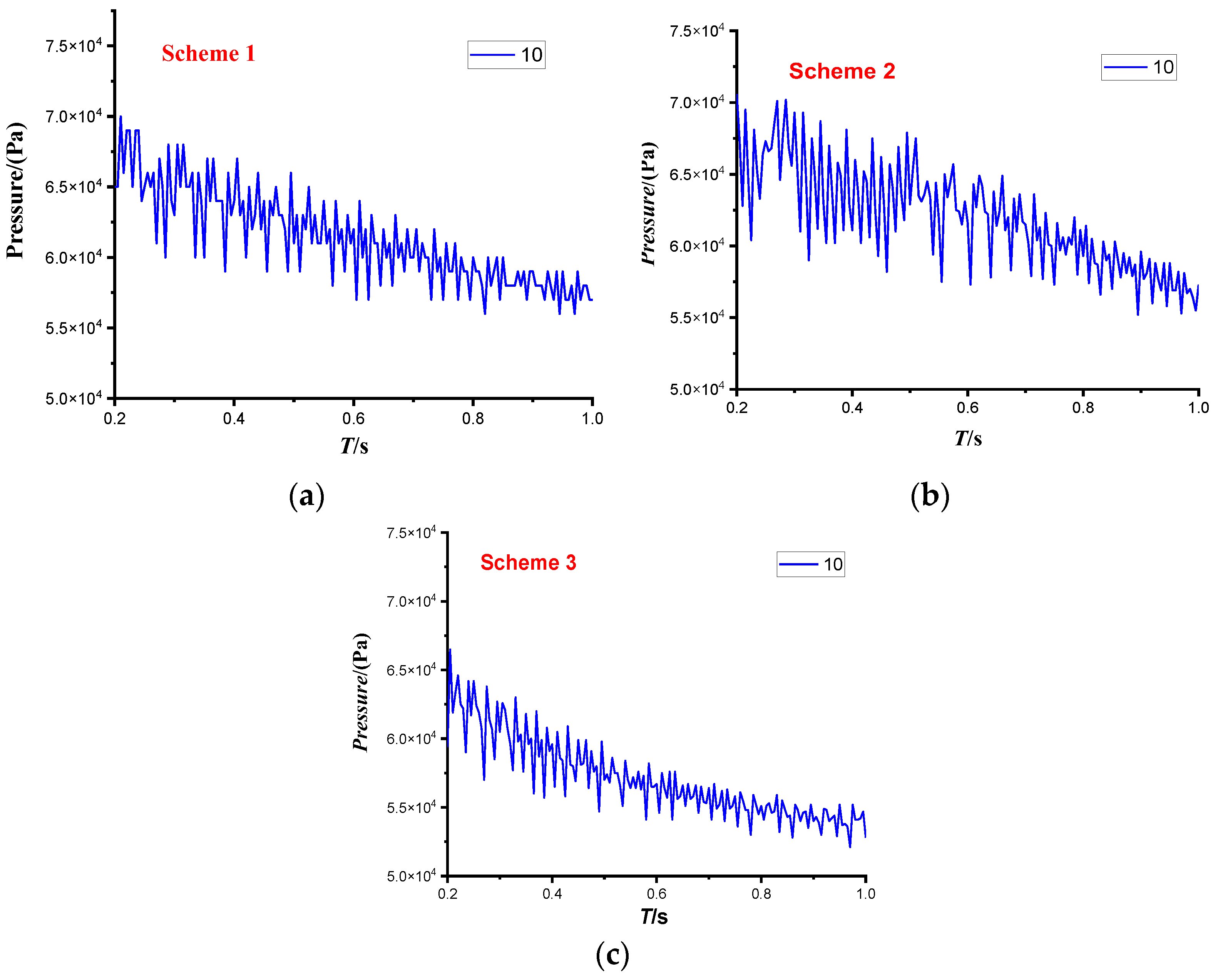
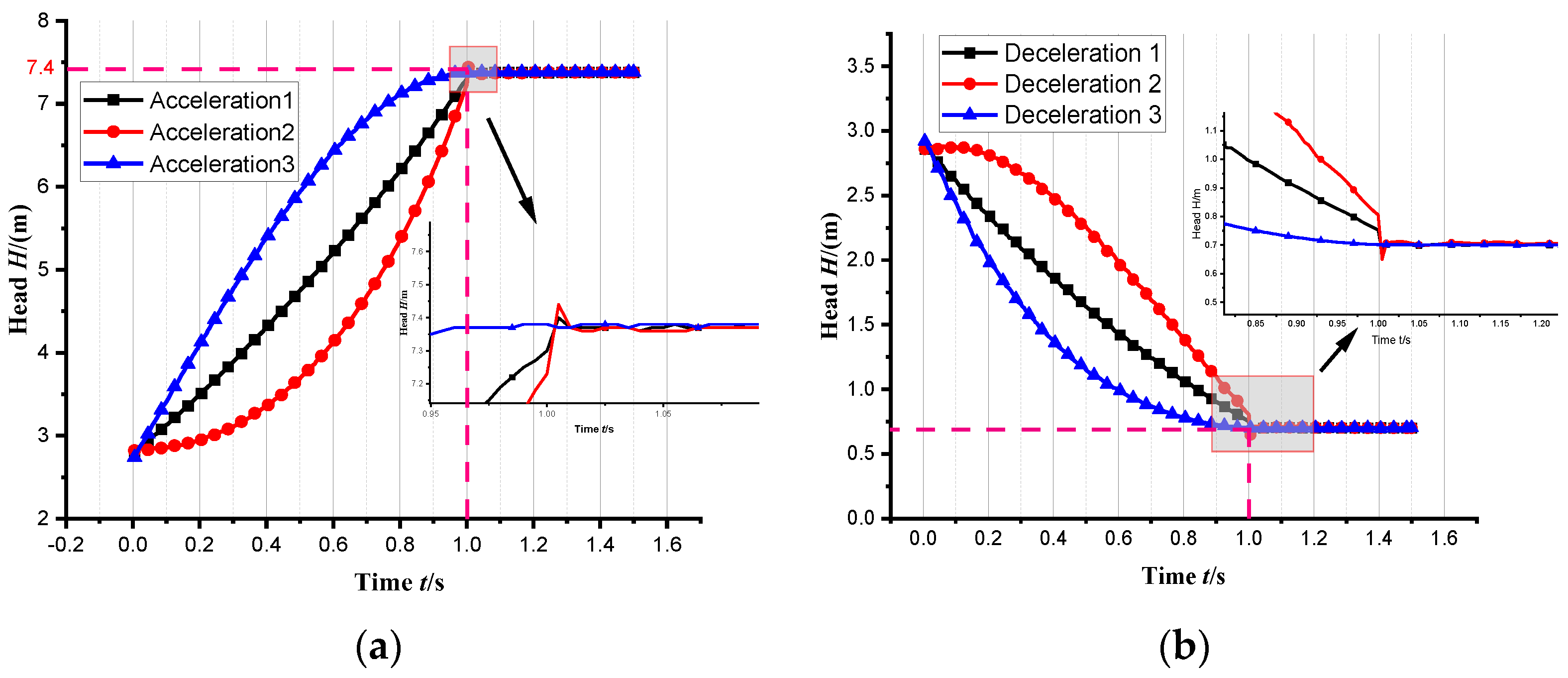
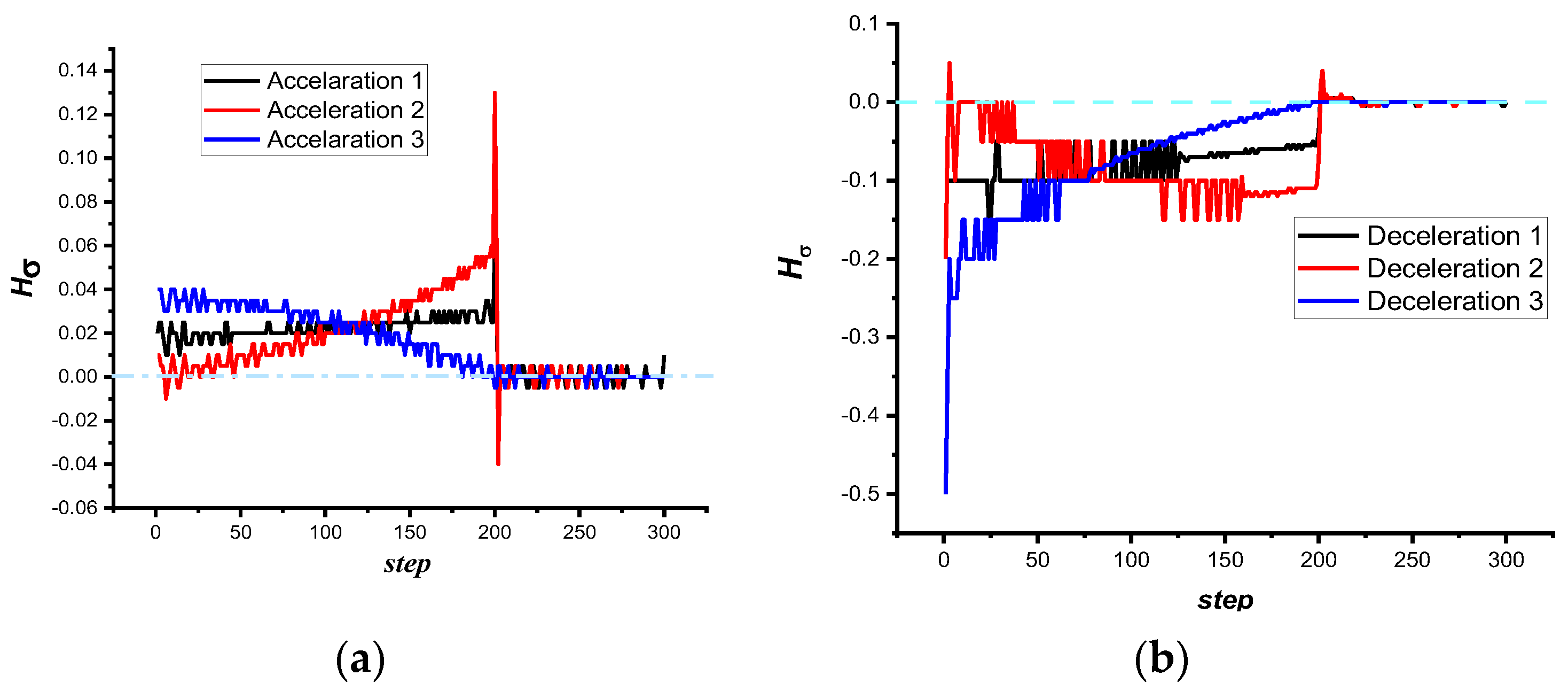

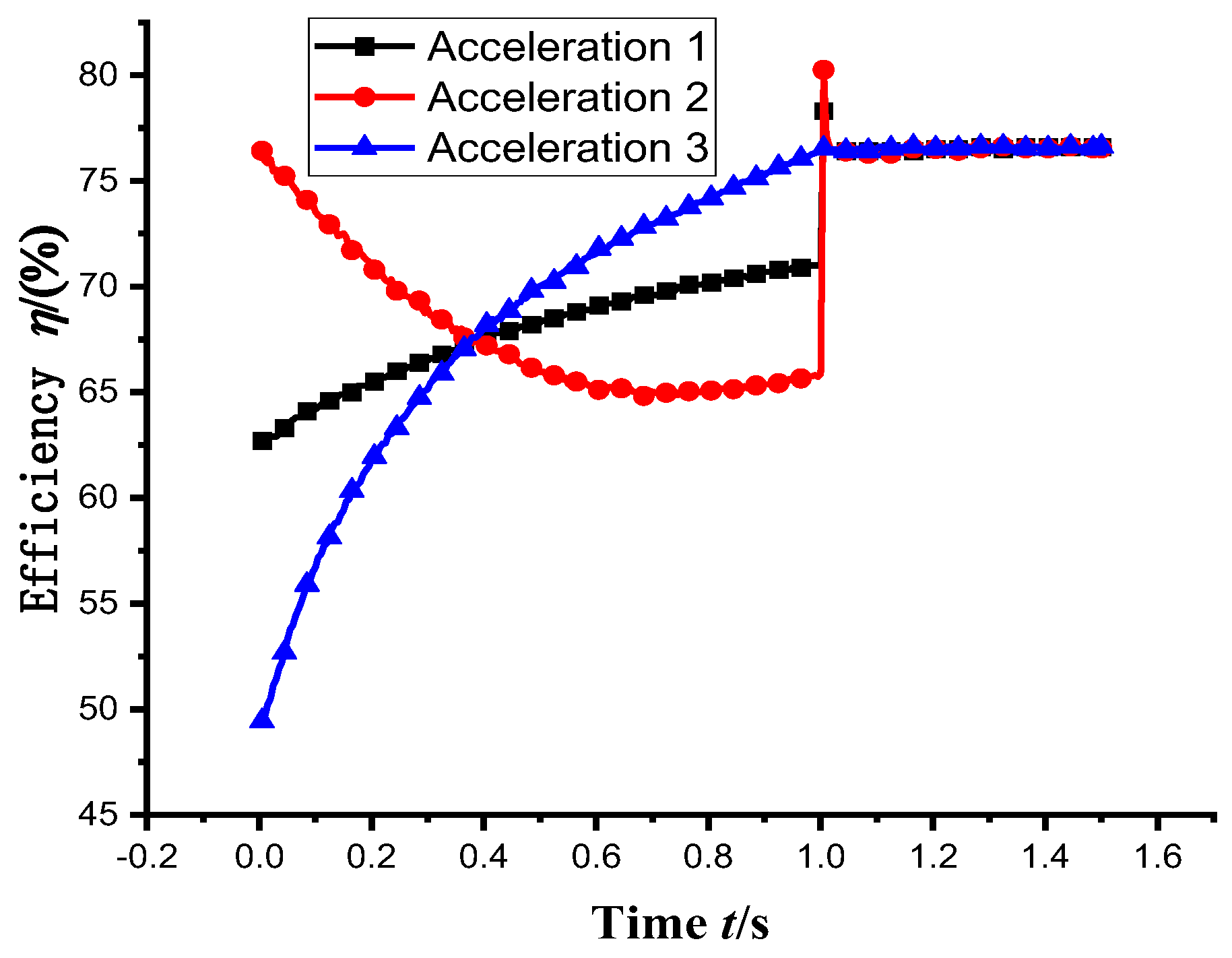
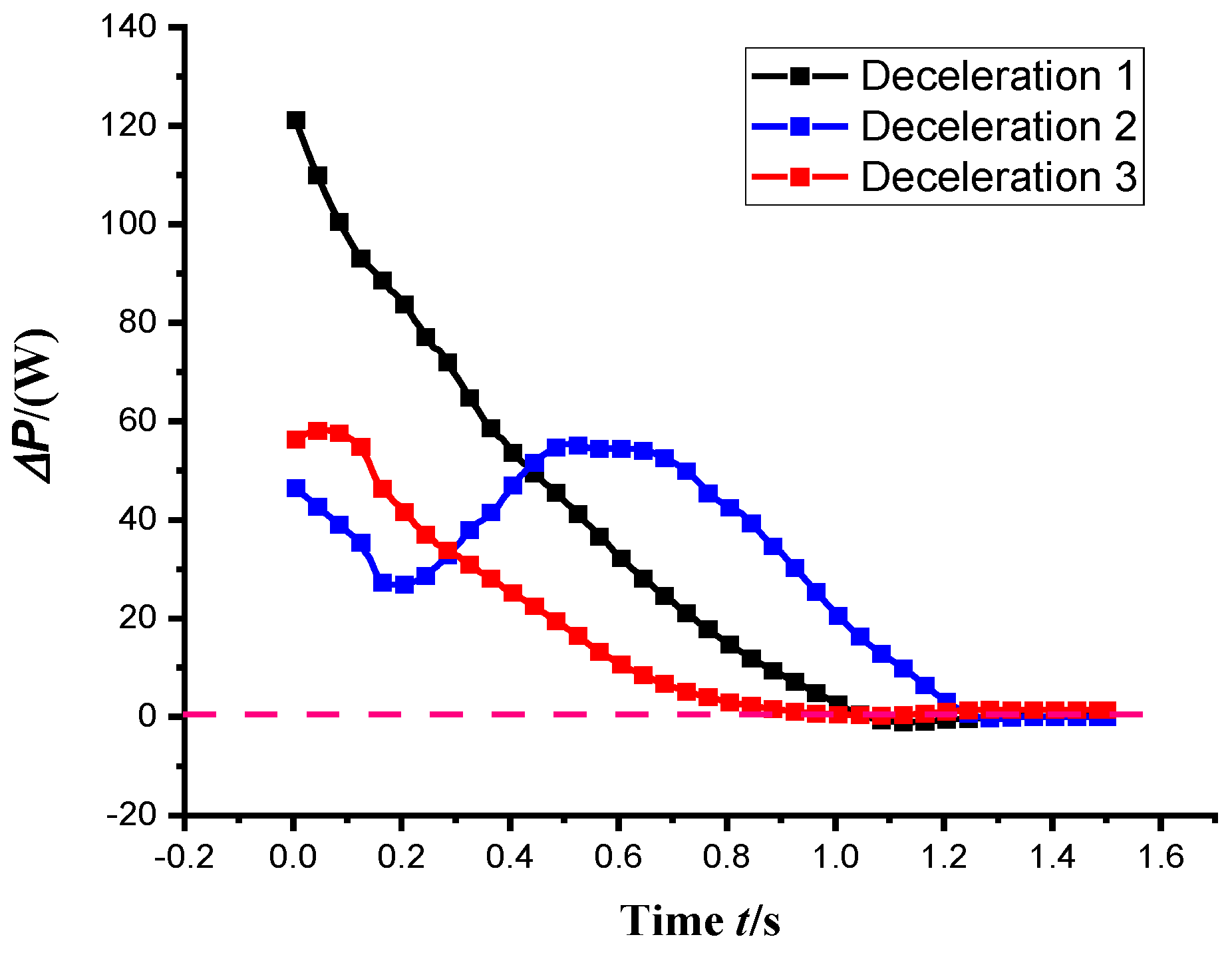
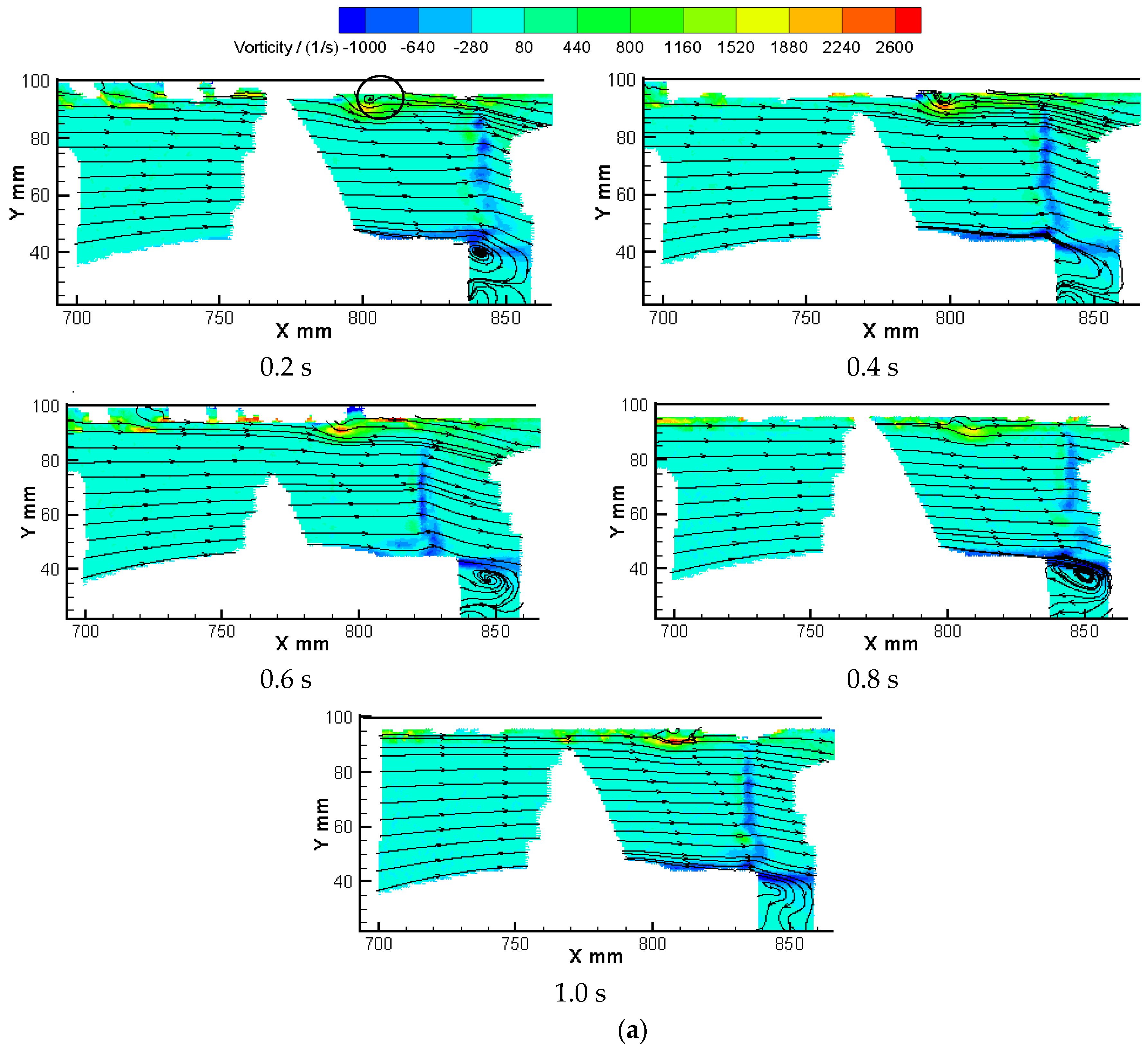
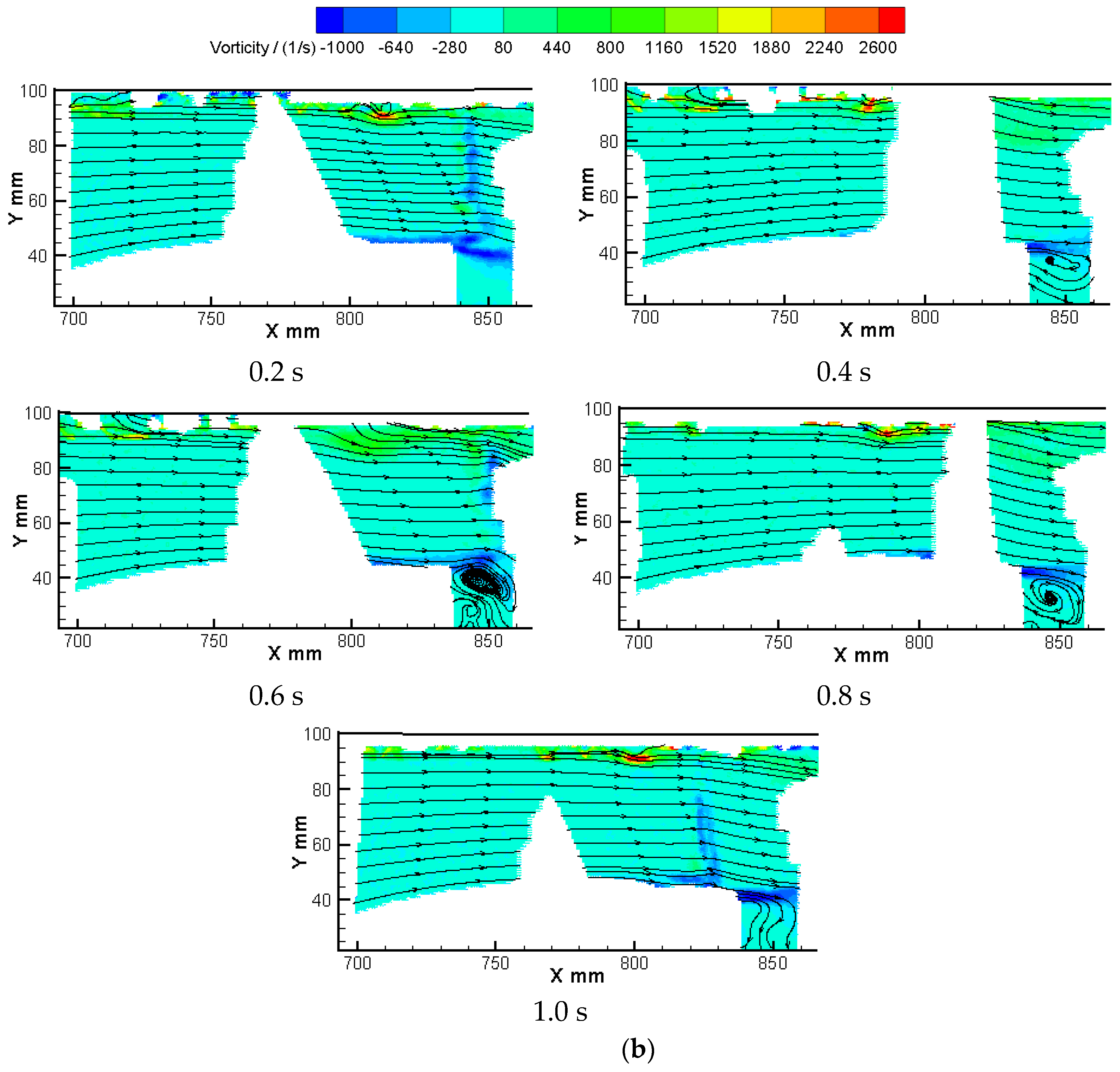
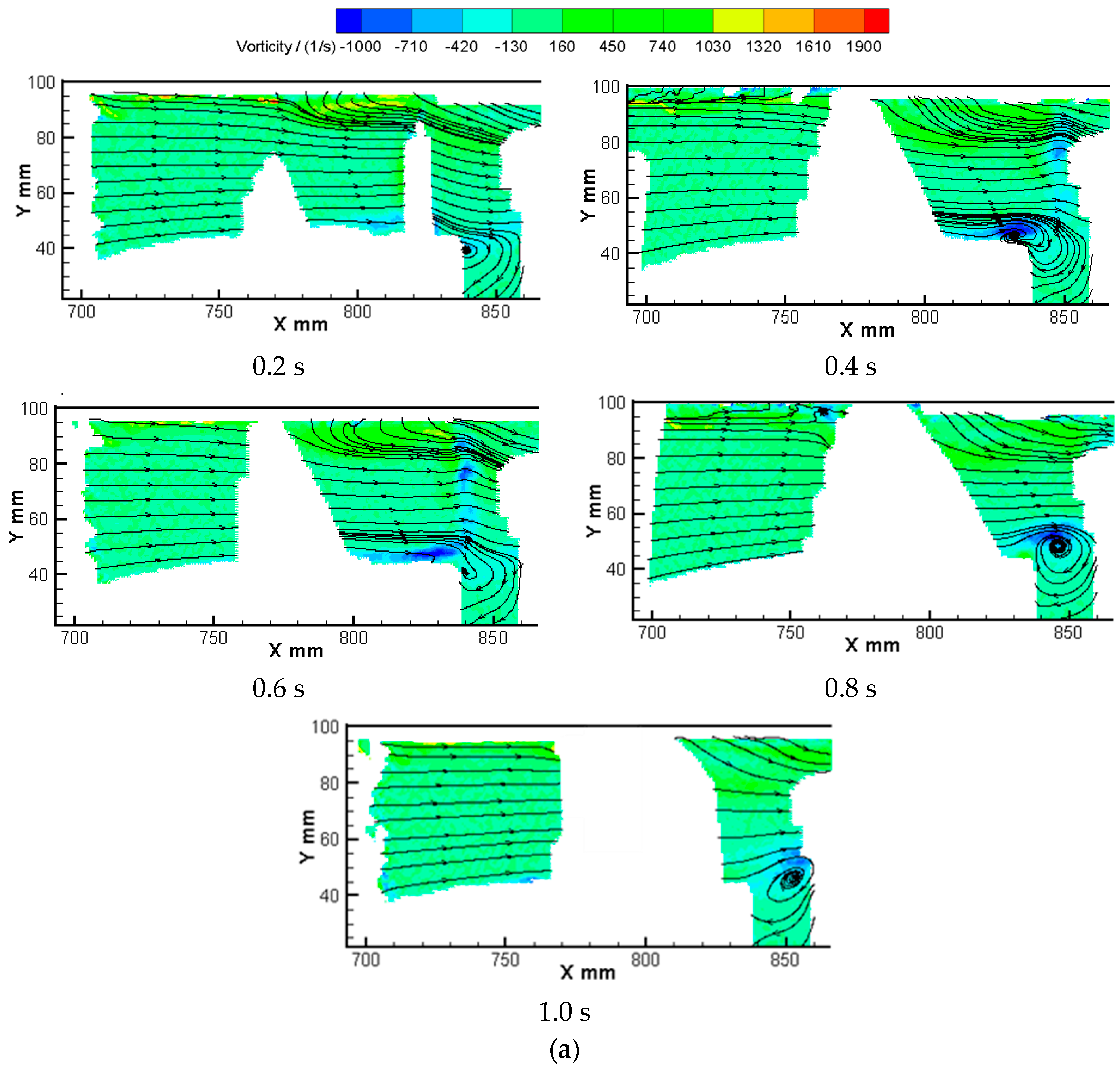

| Main Parameters | Value |
|---|---|
| Flow (m3/h) | 365 |
| Head (m) | 3.02 |
| Number of blades-Zi | 3 |
| Number of guide blades-Zs | 7 |
| Rated speed-n (r/min) | 1450 |
| Impeller inlet diameter-D0 (mm) | 200 |
| Impeller outlet diameter-D2 (mm) | 250 |
Publisher’s Note: MDPI stays neutral with regard to jurisdictional claims in published maps and institutional affiliations. |
© 2022 by the authors. Licensee MDPI, Basel, Switzerland. This article is an open access article distributed under the terms and conditions of the Creative Commons Attribution (CC BY) license (https://creativecommons.org/licenses/by/4.0/).
Share and Cite
Zuo, Z.; Tan, L.; Shi, W.; Chen, C.; Ye, J.; Francis, E.M. Transient Characteristic Analysis of Variable Frequency Speed Regulation of Axial Flow Pump. Sustainability 2022, 14, 11143. https://doi.org/10.3390/su141811143
Zuo Z, Tan L, Shi W, Chen C, Ye J, Francis EM. Transient Characteristic Analysis of Variable Frequency Speed Regulation of Axial Flow Pump. Sustainability. 2022; 14(18):11143. https://doi.org/10.3390/su141811143
Chicago/Turabian StyleZuo, Zilei, Linwei Tan, Weidong Shi, Cheng Chen, Jincheng Ye, and Egbo Munachi Francis. 2022. "Transient Characteristic Analysis of Variable Frequency Speed Regulation of Axial Flow Pump" Sustainability 14, no. 18: 11143. https://doi.org/10.3390/su141811143






